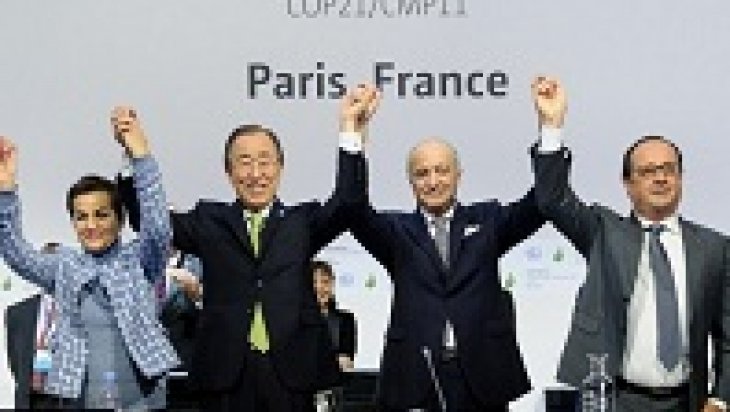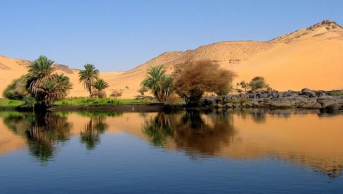The Paris Agreement: A Basic Anatomy of a Vulnerable Victory

Following nearly a decade of preparations and the recent round of intense negotiations between November 30 and December 12, in Paris, France; 195 countries finally agreedon a document called the Paris Agreement by December 13th, 2015. According to Ban Ki Moon, UN Secretary General, it was a “truly historic” event: “For the first time, we have a truly universal agreement on climate change, one of the most crucial problems on earth.” It is apparent that there was a reason to celebrate: if the Paris scenario can be implemented, most of the climate-related risks will be prevented. In particular, agreeing on the goal of 1.5 degrees was a clear victory for small island states, other vulnerable nations and the coalition of the ambitious. However, it is equally apparent that there is much harder work to do than just signing the accord. The real success in terms of the climate change challenge that humanity faces today will be up to the willingness and efforts of future governments.
Let us go ever what the Paris Agreement has basically aimed and achieved. Limiting the rise of global temperature and increasing the adaptive capacity globally are at the core of Paris Agreement. For small island states and other vulnerable nations, such as the Philippines and Bangladesh, sea-level rise was accepted as the biggest threat to their survival. They effectively followed a policy of advocation for 1.5 degrees starting from late 2000s and publicized the slogan of “1.5 to stay alive”. The Paris Agreement has been a decisive victory for vulnerable nations. Article 2, inter alia, states the main aim of the Agreement as: “holding the increase in the global average temperature to well below 2 °C above pre-industrial levels and to pursue efforts to limit the temperature increase to 1.5 °C above pre-industrial levels, recognizing that this would significantly reduce the risks and impacts of climate change”.
The Agreement also aims at “increasing the ability to adapt to the adverse impacts of climate change and foster climate resilience and low greenhouse gas emissions development, in a manner that does not threaten food production”; and “making finance flows consistent with a pathway towards low greenhouse gas emissions and climate- resilient development.”
Another important element in the Paris Agreement is the requirement that all countries have to take part. It was even so during the path towards Paris negotiations. Paris Agreement further reinforced this principle: all nations will take part in dealing with climate change challenges. It was based on the assumption that “climate change represents an urgent and potentially irreversible threat to human societies and the planet and thus requires the widest possible cooperation by all countries”. Therefore, the division between developed and developing countries is no longer valid, in the sense that all countries are required to contribute to the fight against climate change. However, along with this, Article 2.2. of the Agreement reiterates the principle of differentiation of countries, details of which were discussed vehemently during the course of conference: “equity and the principle of common but differentiated responsibilities and respective capabilities, in the light of different national circumstances” will be taken into account.
According to the Agreement, all countries have to report on national inventories of emissions by sourceand also to report on their mitigation efforts. With respect to the methodology, Article 4.13 stipulates that,“in accounting for anthropogenic emissions and removals corresponding to their nationally determined contributions, Parties shall promote environmental integrity, transparency, accuracy, completeness, comparability and consistency, and ensure the avoidance of double counting”.
One of the achievements in the Paris Agreement’s is the establishment of a mechanism to facilitate implementation of and promote compliance with the provisions of this Agreement (Article 15). This mechanism, according to the Agreement,“shall consist of a committee that shall be expert-based and facilitative in nature and function in a manner that is transparent, non-adversarial and non-punitive. The committee shall pay particular attention to the respective national capabilities and circumstances of Parties.”
Another contentious issue was the financial pledges from wealthy nations in helping the developing countries. Developed countries previously promised to provide $100 billion per year by 2020. They are unable to provide the bulk of the money they had promised. The European Union and the United States promised to increase their shares during the conference. On the other hand, many developing countries including Brazil, India have continued to complain that there is huge gap between the amounts developing countries are receiving and financial pledges. They particularly criticized the calculations disclosed in a recent OECD report, claiming that the OECD report included the private investments. For these countries only public funds should be included in these calculations. The Paris Agreement, acknowledging the pre-Paris commitments, called for five-year review cycles of climate finance commitments.
In brief, the Paris Agreement did really achieve a clear and purposeful roadmap for post-2020 period. It also signals a future with less fossil-fuel use and a new economic paradigm where climate-sensitive thinking is prioritized. However, it should be remembered that there is a long way to go in terms of “action”. The first step would be to “adopt” the Agreement through ratification procedures. For instance, the discussions in United States suggest that ratification of Paris Agreement would be a big deal. Even if the Agreement is put into force, the main and formidable task remains unchanged: real work to save the planet and humanity.






